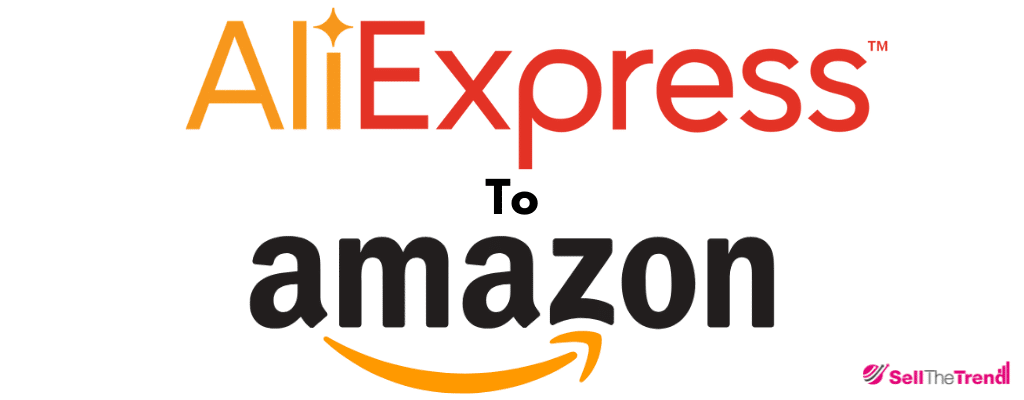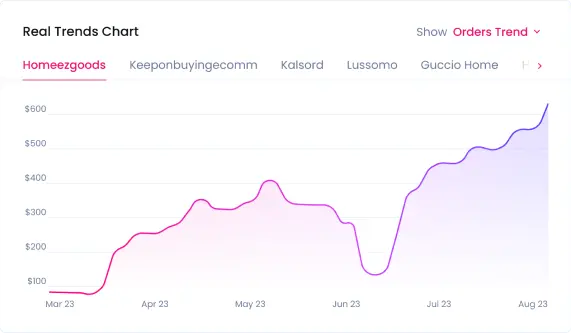How To Dropship on Amazon From AliExpress in 2025
Contents

Wondering whether you can sell AliExpress products on Amazon? The answer is a resounding yes, and it’s an ideal way to expand your online business and tap into Amazon’s vast audience. But how do you do it? How to dropship on Amazon from AliExpress?
We are here to help. We’ll explain everything from creating an Amazon seller account to optimizing product listings, managing shipping costs, and collecting meaningful customer feedback.
Whether you’re just starting an Amazon dropshipping business or looking for ways to streamline your existing operation, we’ll show you how to go from AliExpress to Amazon quickly and effectively.
If you need a helping hand along the way, Sell The Trend is your go-to resource for product research and automation.
Key Takeaways


Dropshipping on Amazon from AliExpress

How Does It Work?
In a dropshipping arrangement between AliExpress and Amazon, the AliExpress supplier is responsible for shipping products directly to your customers. Here’s how it works:
- Customer Places Order on Amazon: A customer purchases a product from your Amazon listing.
- You Place Order with AliExpress Supplier: Upon receiving the order, you buy the product from your chosen AliExpress supplier, providing your customer’s shipping details.
- Supplier Ships Directly to Customer: The AliExpress supplier handles the packaging and shipping, sending the product straight to your customer without involving you in the physical fulfillment process.
If you’re ready to expand from AliExpress to Amazon on a larger scale, consider leveraging Sell The Trend to streamline product sourcing and order management. Our platform supports every step of your Amazon dropshipping business, from analyzing shipping costs to helping you effectively optimize product listings. Sell The Trend’s tools can also reduce the time you spend juggling multiple suppliers, giving you more freedom to address customer inquiries and gather customer feedback.

How to Dropship on Amazon from AliExpress: Step-by-Step

To dropship on Amazon from AliExpress, follow these straightforward steps:
1. Research Products and Suppliers
- Identify trending products on Amazon that you want to sell.
- Use tools like Sell The Trend’s Product Explorer to analyze demand and competition.
- Choose reliable suppliers on AliExpress with high ratings (above 4.5 stars) and a good number of sales.
2. Set Up Your Amazon Seller Account
- Create a professional seller account on Amazon Seller Central.
- Familiarize yourself with Amazon’s policies and fees.
3. List Your Products
- Use Amazon’s listing tools to create detailed product descriptions.
- Include high-quality images sourced from AliExpress.
- Set competitive prices, considering both AliExpress costs and Amazon fees.
4. Fulfillment Process
- When a customer orders from your Amazon listing, place the order on AliExpress and provide the customer’s shipping address.
- Ensure the supplier ships directly to the customer, preferably using reliable shipping options like ePacket.
5. Manage Customer Service
- Track orders and shipping details diligently.
- Respond promptly to customer inquiries and manage returns according to Amazon’s policies.
6. Monitor and Optimize Your Sales
- Regularly review your sales performance and profit margins.
- Adjust prices and product listings based on market trends.
- Consider expanding your product range or automating order processing for efficiency.
7. Important Considerations
- Ensure that your chosen suppliers do not sell directly on Amazon, as this could lead to price competition.
- Communicate shipping times in your product descriptions to manage customer expectations.
Why Dropship from AliExpress to Amazon?

Dropshipping from AliExpress to Amazon offers several compelling advantages for entrepreneurs looking to start or expand their online businesses. Here are the key reasons why this combination is beneficial:
A Wide Range of Affordable Products
AliExpress features millions of products across various categories, including electronics, fashion, and home goods.
This massive selection allows sellers to target multiple market segments and cater to varying customer preferences.
What makes AliExpress especially attractive is its cost-effective sourcing: products are typically available at lower prices compared to many other suppliers, thereby enabling higher profit margins for dropshippers.
Access to a Large Customer Base
Amazon, on the other hand, boasts over 310 million active users globally, offering immediate access to a vast audience.
This massive marketplace significantly enhances the visibility and sales potential for dropshippers.
Moreover, selling on a well-known platform like Amazon increases consumer confidence, making customers more likely to purchase from your listings because they trust the overall shopping experience that Amazon provides.
Low Initial Investment
One of the key advantages of dropshipping is the low initial investment required.
You don’t need to maintain any physical inventory, which cuts down on storage and handling costs.
Essentially, you only buy products after a customer places an order, minimizing the financial risks associated with unsold stock.
This business model is particularly appealing if you’re looking to test different product categories without tying up large amounts of capital.
Automation Tools Available
Efficiency is another reason to consider dropshipping from AliExpress to Amazon.
Tools like AutoDS can streamline the process of importing products and managing orders, which simplifies your day-to-day operations.
AliExpress provides resources such as the Dropshipping Center to help you identify trending products using real sales data, performance metrics, and other helpful analytics.
Global Reach
Many AliExpress suppliers offer international shipping, enabling you to sell to customers worldwide.
This broad, worldwide reach helps expand your market substantially, particularly if you want to scale up quickly.
With Amazon’s enormous customer base, it’s easier to tap into new regions and grow your brand.
Scalability
Another advantage is the relative ease with which you can scale your business.
Because AliExpress has a virtually unlimited product variety and Amazon has an enormous pool of buyers, you can gradually add new products or explore different niches as demand increases.
This flexibility lets you adapt to market trends without being constrained by physical inventory limitations.


Challenges & Considerations for a Successful Dropshipping Business

Dropshipping from AliExpress to Amazon can be a tempting business model, but several significant challenges can hinder success.
Long Shipping Times
One of the most significant drawbacks to dropshipping from AliExpress is the potentially long shipping times.
Products can take anywhere from two to four weeks or longer to reach customers, which is much slower than what Amazon shoppers, especially Prime members, expect.
This gap between customer expectations and delivery speeds can lead to negative reviews and harm your seller rating.
It also creates more customer service inquiries, as people are often concerned about delayed deliveries.
Quality Control Issues
Inconsistent product quality on AliExpress can pose another challenge.
Because you never see or handle the products, it’s difficult to guarantee that items meet your quality standards before they reach customers.
Some products might not match the descriptions you’ve provided on Amazon, leading to returns, refunds, and damage to your seller’s reputation.
Ensuring reliable, high-quality suppliers is essential to minimize these issues.
Inventory Management Challenges
Dropshippers also face inventory management hurdles, as you rely entirely on your supplier to maintain stock.
If a supplier runs out of inventory or discontinues a product without notice, you can’t fulfill orders, resulting in cancellations and unhappy customers.
Products may also be removed or become unavailable spontaneously, making it challenging to maintain a consistent product offering on Amazon.
Returns and Refunds Complexity
Handling returns and refunds can be cumbersome when juggling both AliExpress and Amazon policies.
If a customer wants to return a product, you often need to gather evidence of product issues and follow separate return procedures, which can slow down resolutions.
Financial losses from shipping costs and restocking fees may arise if suppliers don’t fully reimburse you.
Communication Barriers
Working with suppliers based in different countries introduces potential communication obstacles.
Language barriers or significant time zone differences can delay responses to inquiries, and complicate the order fulfillment process and customer service efforts.
Miscommunication around product specifications or shipping timelines can lead to errors and customer dissatisfaction.
Legal and Compliance Risks
There is always a risk of inadvertently selling counterfeit or trademarked items on AliExpress, which can lead to legal issues or account suspension on Amazon.
Additionally, Amazon’s dropshipping policies are stringent. You must be the seller of record for your products and ensure that all invoices, branding, and external communications identify you as the seller. Failure to comply may result in suspension of your seller account.
High Competition and Low Profit Margins
Dropshipping on Amazon is highly competitive. Many sellers may list the same items, which can drive prices down.
Without a unique brand presence or differentiated offerings, profit margins can become thin.
Standing out in such a crowded market often requires creative branding strategies and excellent customer service.
Potential for Scams
Lastly, not all AliExpress suppliers are trustworthy. There is always some risk of scams—suppliers might fail to ship products or provide fake tracking details. Such incidents can lead to financial losses, hurt your Amazon ratings, and damage your brand reputation if customers don’t receive their orders.










